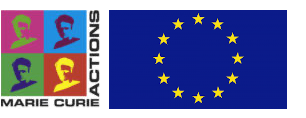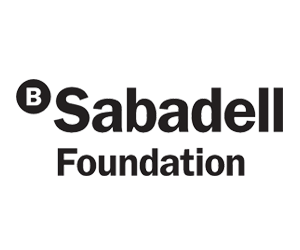


Profile
I consider myself as a very creative, motivated, hardworking and passionate about science. My scientific interests are focused on the cellular and molecular mechanisms of neurodegenerative disorders, with a special concern about the influence of the environment on the physiological processes and its consequences on the development of diseases. After finishing my Biology degree in Venezuela, I was prompted to pursue a Master study in Germany in Molecular Cell Biology and Neurobiology and later continue my scientific career as a PhD student in Natural Sciences in the Biochemistry department at the University of Kiel (Germany).
During my research as a Master and doctoral student, I have made various scientific contributions regarding the understanding of basic cellular and molecular mechanisms of physiological and pathological processes, including the transport analysis of amyloid precursor protein (APP) dimers (Eggert, Gonzalez, et al., 2018, Cell Mol Life Sci.) and the unconventional trafficking pathway of the likewise Alzheimer´s disease (AD)-related protein phospholipase D3 (PLD3) (Gonzalez et al., 2018, Cell reports).
Furthermore, in the course of my PhD, I have participated in diverse international scientific conferences and workshops, giving me the opportunity to be awarded for oral and poster presentation. I have also supervised several bachelor, Master and M.D. students and I was awarded with a Research Scholarship by a German Foundation to continue my scientific achievements.
Currently, as a Postdoc fellow at the Institute of Photonic Science, led by Dr. Michael Krieg, we are interesting on developing alternative imaging tools via the use of bioluminescence proteins and generate prosthetic pathways to circumvent miscommunication events observed in various diseases.
Project
Intercellular communication in living systems using synthetic light transduction signals
Fluorescent proteins (FP) are nowadays the main molecular tool for live imaging. Over the past 10 years several improvements and optimizations have been performed in FPs to fine-tune its brightness and the color palette in the emission color range from blue to yellow. However, one of the limitations of FPs is the requirement of excitation light, which added to the high illumination intensities needed, leads to autofluorescence, bleaching of the fluorophore and phototoxicity.
On the other hand, the use of bioluminescent imaging does not require an excitation light source, minimizing the drawbacks coming from the use of FPs. Yet, this application produce a low photon budget due to the low enzymatic activity, requiring long exposure times. The first aim of the project was to design a microscopy able to detect the photon produced by light-generating bioluminescent enzymes, without the need of using an external light source.
Luciferases produce light via an oxidative reaction. A recent luciferase (NanoLuc, NLuc) has been engineered to produce a glow-type luminescence with a specific activity 150-fold greater than that of firefly or Renilla luciferases. Moreover, its brightness efficiency has been upgraded by the phenomenon of bioluminescence resonance energy transfer (BRET), in which the excited energy coming from the luminescent substrate, bound to NLuc is transferred intermolecularly to an acceptor fluorescent protein, thereby increasing the emitted photon number. To date, this luminescent protein is termed Nano-lantern (NL).
We have expressed this NL in the body wall muscle and specific neurons of the nematode C. elegans, being able to produce a high resolution image with our new in-house bioluminescence microscope with as low as 100 ms exposure time, compared to the 10s needed with the firefly luciferase. A similar approach has been done in culture cells expressing the NL in different intracellular compartments.
Now that we were able to maximize the photon yield, a direct comparison between the fluorescent and the bioluminescent imaging is needed, in order to strength the advantages of using luminescent enzymes as an alternative and improved imaging tool. We expect that this technology will enable the imaging of long-term biological processes and dynamics, which are not efficient with the use of FPs. As an additional bio-engineering tool, we are using microfluidics to perform fluorescence and bioluminescent imaging, in order to study the neuronal response in distinct C.elegans neurons upon specific chemical and mechanical stimuli.
The final goal of this project is to use this NL-dependent photon production as a source of biological signaling and engineer a prosthetic intercellular communication system able to rescue or prevent miscommunications events observed in various diseases. Furthermore, we pursue to engineer a cell-based in vitro system coupled to a change in gene expression directed to reprogram cellular behavior.













